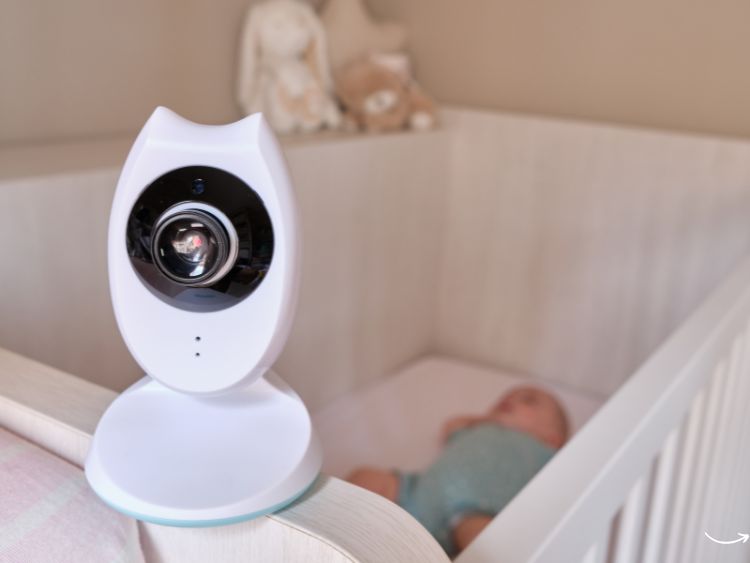Why Every Parent Needs a Baby Monitor
As a parent, ensuring your baby’s safety and comfort is always top of mind. A baby monitor is one of those must-have devices that provide peace of mind while letting you attend to other tasks. Whether you’re cooking dinner or catching up on some well-deserved rest, a baby monitor keeps you connected to your little one. But with so many options out there, how do you choose the right one? Don’t worry—we’ve got your back!
In this guide, we’ll explore everything you need to know about baby monitors, from the different types available to the features you should prioritize. Let’s dive in!
What Is a Baby Monitor, and Why Is It Important?
A baby monitor is essentially a device that helps you keep an ear—and often an eye—on your baby when you’re not in the same room. They’ve come a long way from simple audio transmitters to high-tech gadgets with video capabilities, temperature sensors, and even sleep tracking.
Key Reasons You Need a Baby Monitor:
- Peace of Mind: You can hear or see your baby without constantly checking in person.
- Safety: Alerts for sounds or movements can help you respond to potential issues quickly.
- Flexibility: Allows you to move around your home freely while staying connected.
Types of Baby Monitors: Which One Suits Your Needs?
Not all baby monitors are created equal, and choosing the right one depends on your family’s lifestyle and preferences. Here’s a quick breakdown:
1. Audio-Only Monitors
- Pros: Affordable, easy to use, and reliable.
- Cons: Lack of visual monitoring.
- Best For: Parents who just want to hear their baby’s cries or sounds.
2. Video Monitors
- Pros: Allows you to see your baby, ensuring extra peace of mind.
- Cons: Pricier than audio-only models.
- Best For: Parents who want visual reassurance, especially at night.
3. Smart Monitors
- Pros: Offers advanced features like sleep tracking, breathing monitors, and app integration.
- Cons: Can be expensive and require strong Wi-Fi.
- Best For: Tech-savvy parents who want detailed insights into their baby’s well-being.
4. Wearable Monitors
- Pros: Tracks vitals like heart rate and oxygen levels.
- Cons: Might feel intrusive for some babies.
- Best For: Parents concerned about health issues or premature infants.
Top Features to Look for in a Baby Monitor
When shopping for a baby monitor, it’s easy to get overwhelmed by the options. To make it easier, here are some must-have features to consider:
1. Range
- Ensure the monitor works well across your home. For larger homes, go for a monitor with a long range.
2. Video Quality
- If opting for a video monitor, look for at least 720p resolution for clear visuals, especially at night.
3. Battery Life
- A long-lasting battery is essential for overnight monitoring.
4. Sound Sensitivity
- Adjustable sensitivity levels help you tune out background noise while catching your baby’s cries.
5. Two-Way Communication
- Talk to your baby or soothe them without rushing into the room.
6. Night Vision
- Most video monitors include infrared night vision so you can see your baby in low light.
7. Smart Features
- App connectivity, sleep tracking, and breathing monitoring are great for tech enthusiasts.
How to Set Up a Baby Monitor
Once you’ve chosen your ideal baby monitor, proper setup is key to ensuring it works effectively. Here’s how to do it:
- Choose the Right Location:
- Place the monitor at least three feet away from the crib to avoid interference and ensure safety.
- Secure the Cables:
- Keep cords out of reach to prevent strangulation hazards.
- Test the Signal:
- Walk around your home to ensure the monitor has a strong connection everywhere you’ll need it.
- Adjust Camera Angles:
- If using a video monitor, ensure the camera covers the entire crib area.
Pros and Cons of Baby Monitors
Pros:
- Enhanced safety and peace of mind.
- Allows multitasking without constant physical supervision.
- Advanced features provide valuable insights into your baby’s health.
Cons:
- High-tech models can be expensive.
- Some monitors may require a strong Wi-Fi connection.
- Over-reliance on monitors might make some parents anxious.
FAQs About Baby Monitors
1. What’s the best baby monitor for small spaces?
For smaller homes or apartments, audio-only monitors or compact video monitors with a short range work perfectly.
2. Are baby monitors safe to use overnight?
Absolutely! Just ensure that the device is placed at a safe distance from the crib, and cords are secured.
3. Can I use a baby monitor with multiple cameras?
Yes! Many models support additional cameras, making them ideal for monitoring multiple children or rooms.
4. Do all baby monitors need Wi-Fi?
No. Audio-only and some basic video monitors don’t require Wi-Fi, making them more secure against hacking.
5. How long do baby monitors last?
Most monitors can last several years with proper care, though batteries may need replacing over time.
Summary: Choosing the Right Baby Monitor
Investing in a baby monitor can make your parenting journey smoother and safer. From basic audio models to smart monitors with all the bells and whistles, there’s something for everyone. Always consider your home size, budget, and must-have features when selecting the best option.
Whether you’re a first-time parent or adding to your growing family, a good baby monitor is worth every penny. After all, your baby’s safety and your peace of mind are priceless!
